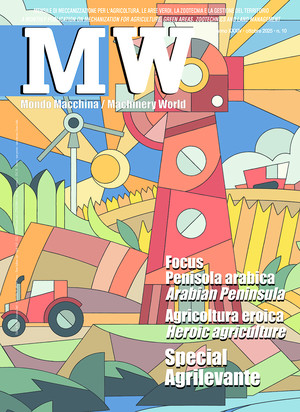
Market at its peaks in the first half of 2021
Europe ended the first half of the year with 25% growth compared to the same period in 2020. All European countries are in the black. The raw material crisis is weighing on the market, but demand remains high
Between January and June, the European tractor market "kicked into high gear", posting significant increases compared to the same period in 2020. This is what the final figures for the first half of 2021 for the European agricultural machinery sector indicate. Released last October by Cema (the European association of agricultural machinery manufacturers), they essentially confirm the growth trends forecast for the individual national markets.
25% growth in the first half of 2021. From Spain to Norway, from France to Ireland, including Portugal and Austria, all the countries of the "old continent", except Serbia and Montenegro, closed the semester in the black. The data referring to Europe as a whole (30 markets surveyed by CEMA) recorded a total of 89 thousand registrations of agricultural tractors in the first six months of the year, marking +25.5% compared to 2020, the year in which registrations stopped at over 70 thousand. The sector's expansion is even more pronounced if, in addition to the trend in tractors, we take into account the dynamics of vehicles such as telehandlers and so-called ATVs (all terrain vehicles). In this case - explains a note of the European association - the total number of vehicles registered in the first six months rises to 115,000 (+27%) compared to 90,000 registered in the same period of 2020.
The performance of national markets. Considering the countries with an annual sales volume of more than three thousand vehicles, the markets that recorded the greatest progress were Poland and Finland (both +40% compared to 2020) where, in the first six months of the year, 9,884 and 6,806 tractors were sold respectively. Record figures for Sweden (+30% with 6,371 tractors sold), while Spain (+29% with 5,744 units) and the United Kingdom (+28% with 7,785) were slightly lower than the Scandinavian country but still above the European average. France (+23% with 15,934 units sold) and Germany (+15% with 17,164 units registered) are also growing, albeit at a lower rate. Together with Italy (+52% and 12,537 units), they are the main markets on the continent, accounting for more than half of European sales in the first half of 2021. Among the minor markets, the Czech Republic (+33%), Belgium (+27%), Ireland (+26%) and Portugal (+24%) stand out, while Hungary is not too far off the 2020 volumes. In a very lively scenario, the only countries bucking the trend were Serbia and Montenegro, which halved their tractor sales compared to the first six months of last year.
The outlook for the end of the year. According to CEMA, the conditions that have contributed to the strong growth of the European market in recent months - first and foremost, the need to ensure continuity of supply during the health emergency and to satisfy an ever-increasing demand for foodstuffs - should continue to exist in the second half of the year, leading to a profitable year-end result. However, the final months of 2021, CEMA warns, could see a downturn in overall business due to the ongoing problem of commodity shortages and the resulting rise in commodity prices. According to the findings of the latest Business Barometer, the climate survey conducted last October among manufacturers belonging to the European association, market indicators are slightly down on the highs reached in May and June, while compared to August the number of companies expressing a negative opinion on their business trend has increased significantly (+10%). The worsening of the scenario, however, is relative, since a large majority of manufacturers 63%, expect an expansion of their business in the coming months.
Agricultural technologies, still high demand. Two factors influence the future development of the sector. On the one hand, the market is having to cope with the commodity crisis, which is severely testing the production capacity of the European agro-mechanical industry - some factories have planned a temporary stop of their production - and, on the other hand, it is being stimulated by a demand for agricultural technologies, which operators in the sector expect to remain high, especially in Central and Eastern European countries. In Eastern Europe, the role of "markets under observation" falls to the markets of the former Soviet bloc, which are expected to perform best in the coming months - according to CEMA - and could therefore represent an important driving force for the European agricultural machinery sector.








